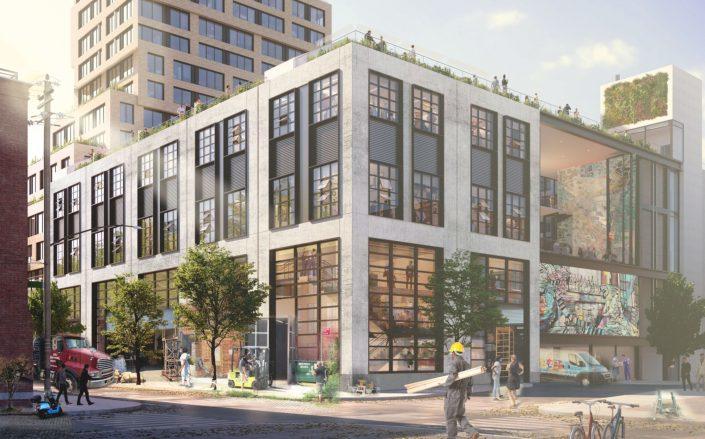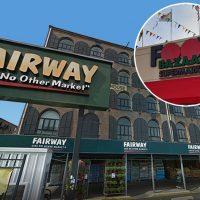Developers can’t go through Carlos Menchaca, but they can go around him.
The Brooklyn City Council member last year killed a major rezoning in his district and tried to stop one in someone else’s. Now, a builder is steering a $200 million Red Hook project to an agency where Menchaca has no vote.
The proposal for 145 Wolcott Street includes 210 apartments — 61 of them affordable — in a manufacturing zone, so it needs either new zoning from the City Council or a variance from the Board of Standards and Appeals.
The developer, Alexandros Washburn, opted to seek the latter, knowing that even if a rezoning got through city planners, the Council would defer to Menchaca because the project is in his district. Menchaca is best known for stopping the Industry City zoning application that the campus’s owners said would trigger $1 billion in upgrades to the campus.

A rendering of the Red Hook Project (Arquitectonica)
Three months later Menchaca rallied opposition to a $2 billion Flushing project in Peter Koo’s district, asking colleagues to ignore the same tradition of member deference that Menchaca had just demanded they respect on his own turf. The Queens project passed, but Menchaca’s move marked him indelibly as a man for developers to avoid.
Washburn will instead roll the dice with BSA chairwoman Margery Perlmutter and the four other members of the obscure but powerful panel.
Perlmutter is an architect and a lawyer. Land-use professionals consider her a fair arbiter. They see Menchaca as an unreliable negotiator — a politician who moves the goalposts, is inconsistent in his reasoning and bends to the whims of his loudest constituents.
And now that he is running for mayor and courting the endorsement of the Democratic Socialists of America, the industry trusts him even less, if that is possible.
Besides bypassing crotchety Council members, going to the Board of Standards and Appeals can save developers a year off the approval process — and maybe a digit off the cost.
To be sure, Washburn’s path at the BSA will not be easy. Like all variance applicants, he must persuade the board of five things: that his site has special challenges, that he did not cause them, that he could not make a reasonable return without a variance, that his project would not change the character of the neighborhood and that he is not asking the board for more than he needs.
Read more



The site is contaminated, so Washburn will say he needs the higher returns of residential to pay for remediation. He will say it won’t change the neighborhood because, despite its zoning, there are already lots of homes nearby. He bought the property in 2019, so he can say he did not cause the hardship. And the project is 25 percent commercial and 22 percent manufacturing, so he can say he is not asking for a purely residential use.
But opponents — no doubt including Menchaca, who did not comment for this story — will rebut these arguments before Brooklyn Community Board 6, which can render an advisory opinion, and then directly to the BSA.
They will start with this: The site is not only zoned for manufacturing, it’s in an industrial business zone. IBZs were designated by the Bloomberg administration to protect their businesses from the very thing Washburn is seeking — residential use.
Residents in manufacturing districts call 311 to complain about noise, trucks, odors, lights or whatever else bothers them, leading to violations and fines for their industrial neighbors. Even worse, industrial landlords see nearby owners raking in cash from apartments and want the same, so they raise rents and offer only short-term leases or none at all until their business tenants give up and leave.
IBZs were essentially a promise by the Bloomberg administration — and a message to landlords — that industrial sites will stay industrial. Mayor Bill de Blasio strengthened that promise by requiring a special permit for hotels and self-storage to locate there. His planning department might well have blocked a Washburn rezoning application before it even got to Menchaca. The mayor has less control over the BSA, but did appoint all five of its members.
Advocates for industry will further challenge Washburn’s assertion that he can’t make a decent return on investment without apartments.
“Industrial businesses have been a lifeline for our city,” said Ben Margolis, executive director of the Southwest Brooklyn Industrial Development Corporation, which guards Red Hook’s IBZ. “Industrial properties remain a relatively strong sector, particularly as the pandemic continues to limit the city’s retail, office and residential markets.”
Critics of the 14-story project will also call it out of scale with the low-slung neighborhood; Washburn will counter that 135 Richards Street, within the Red Hook Houses, is also 14 stories.
The opponents will line up locals to testify against the project, and Washburn will line up locals to support it. (Several were quoted in his press release announcing the project Tuesday.)
Washburn, a longtime Red Hook resident, is partnering with Washington, D.C.-based development firm Four Points on the project, which they have dubbed “the Model Block.” Besides the mixed-income housing, it has light manufacturing, office space, an art gallery and space for a restaurant and stores.
It will be a fight, but a fair fight. Washburn’s alternative is to place the fate of his project in the hands of one man — a man running for office on an anti-development agenda and a record to back it up.
Menchaca is sure to complain at the developer’s choice, but the Council member really did not leave him one.
